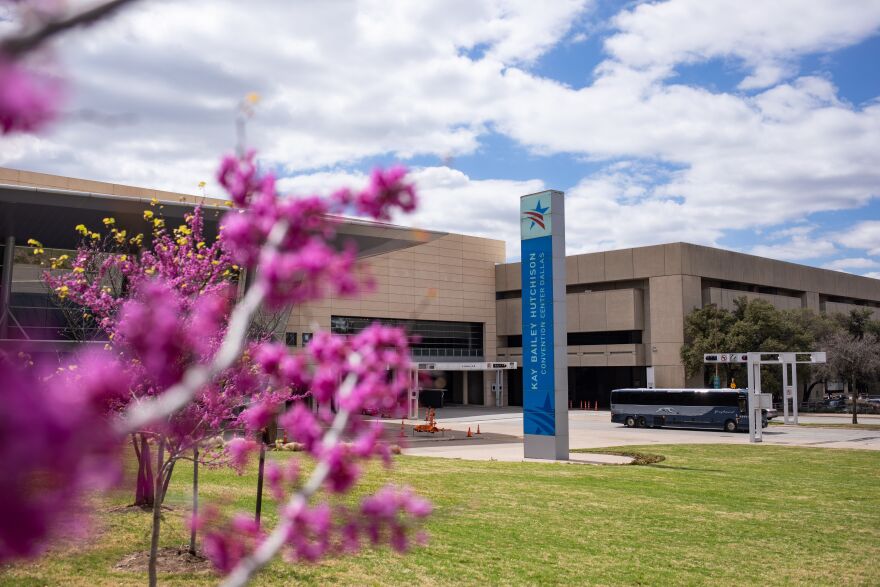It’s just past dawn outside the Kay Bailey Hutchison Convention Center in downtown Dallas, and a group of volunteers in bright neon vests is huddled over a lifeless orange and green bird that fell underneath the building's skywalk.
“Is it a female?” one asks. “Actually, maybe an oriole,” another says.

The volunteers are with a coalition of environmental groups that regularly track bird deaths. Each fall and spring, they spend their mornings downtown collecting the dead or stunned creatures that have collided into buildings.
“In the fall, you'll start seeing warblers coming and then sparrows and … kind of towards the end of the season in November, we see a lot of American Woodcocks," said Mei Ling Liu with the Texas Conservation Alliance.
She said since volunteers began monitoring collisions five years ago, they’ve collected thousands of fallen birds, which they send to the Perot Museum for storage; from there, the Texas A&M’s Biodiversity Research and Teaching Collection lab processes them for documentation.
“In the last 50 years, bird populations in North America have declined by 3 billion. Billion with a ‘b,’" said Nathan May, a volunteer with the Trinity River Audubon Center. “That's a big percentage of the birds.”
Millions of bird species fly through Texas each year on their migration from north to south and back. Experts say hundreds die from colliding into buildings in downtown Dallas; it’s the third worst city in the country for bird deaths.
And one building in particular is especially deadly: the Kay Bailey Hutchison Convention Center. Liu said the skybridge – with its high, reflective windows – is problematic for bird collisions.
“The volunteers will kind of check, depends on the window height, we'll check the underground and see if we find any collisions,” she said.
She and the other volunteers are now asking the city to rethink the redesigned convention center to make it more bird-friendly.
That could include turning off lights at night, which advocates promote as part of the 'Lights Out' campaign. Another way is installing patterned glass — which birds can see from a distance, said Kaitlyn Parkins with the American Bird Conservancy.
“They recognize those pattern elements as solid barriers, and they turn around and fly the other way," she said during a recent webinar.

Parkins works to educate architects, engineers and the general public on bird-safe buildings. There’s already one good example of a building that was redesigned to be bird-friendly: the Javits Center in New York City. Before it was renovated in 2012, it was killing thousands of birds each year. After it installed bird-safe glass, casualties dropped by 90-95%.
Dallas Assistant City Manager Robin Bentley said in a written memo in early September that the Kay Bailey Hutchison Convention Center’s design team is considering the data collected by volunteers and will incorporate it into the new design.
May, with the Trinity River Audubon Center, said it’s important to keep monitoring bird deaths because of their crucial role in the environment. He and other conservationists said by rethinking the design of the new convention center, Dallas can help save the lives of thousands of birds — and improve the city as a whole.
“Where birds thrive,” he said, “people prosper.”
Pablo Arauz Peña is KERA’s growth and infrastructure reporter. Got a tip? Email Pablo at parauzpena@kera.org.
KERA News is made possible through the generosity of our members. If you find this reporting valuable, consider making a tax-deductible gift today. Thank you.





